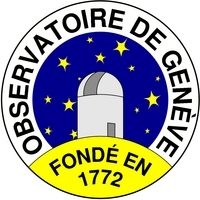
| INTEGRALPlanckGaiaPOLARCHEOPSEuclidATHENA |
| HEAVENSFACTCTALOFTSPICAJEM-EUSOXIPEeXTPTheseus |
| XRISMMAGBOUNDSMARTNet |
| ISDCCDCI |
| Fast X-ray timing and spectroscopy at extreme count rates |
Scientific Goals
This conference is dedicated to the science of the High Time Resolution Spectrometer (HTRS), an instrument part of the baseline payload of the future ESA/JAXA/NASA mission International X-ray Observatory. The conference include other future-mission concepts that plan to address similar science as that of the HTRS.
What is the HTRS ?
The High Time Resolution Spectrometer (HTRS) is an instrument proposed to match the top level mission requirement of the International X-ray Observatory to observe a one Crab X-ray source with less than 10 percent deadtime. It will perform high precision timing measurements of bright X-ray sources. It can observe sources with fluxes of 106 counts per second in the 0.3-10 keV band without performance degradation, while providing moderate spectral resolution of 150 eV FWHM at 6 keV.
The HTRS is dedicated to the study of strong-gravity phenomena and accretion in the vicinity of accreting black holes and neutron stars, through simultaneous fast X-ray timing and spectroscopy. It also offers a unique tool to probe matter at supra-nuclear densities. It addresses primarily the science theme Matter under Extreme Conditions.
The HTRS is designed as an array of 31 low-capacitance silicon drift diodes (SDD). The sensor will be placed slightly out of focus in order to spread the photons from the converting beam from the FMA as evenly as possible over all pixels, which will increase the overall count rate capability (up to 2 Mcounts/sec, about 12 Crab) while keeping the electronics deadtime and pile-up to about 2 percent for a 1 Crab source and still providing micro-second time resolution and good energy resolution (goal 150 eV).
Goals of the conference
The main goal of the conference is to stimulate current research that will prepare the science that will be achieved with IXO and the HTRS or other future-mission concepts with similar science goals. The contributions will build on the experience gained through the Rossi-XTE, XMM-Newton, Suzaku and Chandra missions, and will explore the gains offered by the future missions.
We plan to organize the meeting around nine sessions, each consisting of an invited review and some contributed talks (around 40 in total). The topics that will be addressed during the conference include, but are not limited to:
- Topics in the science case of IXO driving the need for HTRS
- Black hole spin: line, continuum, quasi-periodic oscillations
- Neutron star equation of state: M/R from burst spectra, magnetar quasi-periodic oscillations, kHz quasi-periodic oscillations, iron line, burst oscillations
- General relativity in the strong-field regime: Lense-Thirring precession, epicyclic frequencies, innermost circular orbit, event horizon
- Other topics that are not drivers of the HTRS/IXO proposal
- Neutron star cooling
- Accretion discs
- Accreting millisecond X-ray pulsars
- X-ray bursts
- Soft gamma-ray repeaters, anomalous X-ray pulsars
- Jets
- Multiwavelength observations
- Instrumentation, with a focus on the HTRS and IXO and other timing mission concepts







